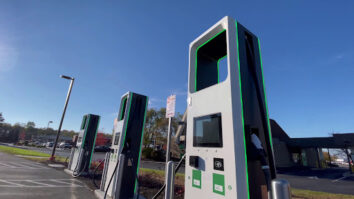Since the Paycheck Protection Program (PPP) reopened in December 2020, nearly $135 billion of the $284 billion of allocated funding has been lent to small business owners, leaving roughly $149 billion of the PPP funds allocated at that time in play through the program’s end on March 31, 2021. The stimulus proposal currently making its way through Congress proposes an infusion of an additional $7 billion to the PPP.
While the Biden Administration has not called on Congress at this point in time to extend the March deadline, the Administration has announced changes to the PPP. The changes were made in an effort to expand access to the PPP to more minority-owned and very small businesses, prevent fraud, and increase program transparency.
What changes are already in effect?
Small businesses with fewer than 20 employees will have a two-week window, beginning on Wednesday, February 24th and ending on March 9th at 5 PM EST, to apply for the funding, while larger businesses are unable to apply during that time. The PPP will reopen to all eligible entities on March 10, 2021, and remains open through March 31, 2021.
“Ninety-eight percent of small businesses have fewer than 20 employees,” states the White House’s February 22nd press release. “They are Main Street businesses that anchor our neighborhoods and help families build wealth.” The Biden Administration says the 2-week window was established to help “the smallest businesses and those that have been left behind in previous relief efforts.”
What changes take effect in the first week of March?
Self-employed, sole proprietors, and independent contractors may qualify for more money. Further guidance is needed, but it seems sole proprietors will be able to use gross income instead of net income when applying for the PPP. This would mean, even if you had a loss or no net income in 2019 or 2020, you may now be eligible for a PPP loan. We expect additional guidance and a new application form to be issued sometime next week.
The Biden Administration is expanding eligibility to include small business owners with non-fraud-related felonies, a delinquent status on federal student loans, and non-citizens that are lawful US residents.
The Biden Administration changed the loan guarantee approval process as well. Loan approval is now “contingent on passing SBA fraud checks, Treasury’s Do Not Pay database, and public records,” according to the White House.
What do the changes mean for borrowers?
The new fraud measures and errors may likely cause loan processing delays as the SBA and PPP lenders iron out the new program rules. Prospective self-employed PPP borrowers have to weigh the benefits of continuing or pausing the application process, as some could be eligible for larger loans once these changes take effect. At this time, it isn’t clear what this means for those self-employed borrowers who already received loans but would now be eligible for larger loans.
We expect the IRS to issue additional guidance in the coming days and weeks. Here are some of the SBA’s resources currently available for 2nd draw loans:
Second Draw PPP Borrower Application
Top-Line 2nd Draw PPP Overview
Frequently Asked Questions for Lenders and Borrowers
Contact ARB
ARB’s PPP Services Group members have been hand-picked, based on knowledge, training, and experience, to deliver advice and sound recommendations to PPP loan recipients. If you would like to discuss this further, contact me today.
Check out other ARB business tools and resources, such as our 13-Week Cash Flow Analysis tool and our PPP Loan Forgiveness Workbook. Visit our COVID-19 Financial Resource and Tax Center for information on related matters.
by Bart Haag, CPA
Bart Haag joined ARB in 1996 and has been a principal with the firm since 2005. His career focus is primarily in providing financial accounting, income tax planning, and business advisory services for clients in the automotive and motorcycle dealership industries and for closely-held businesses, many of which are family-owned.





